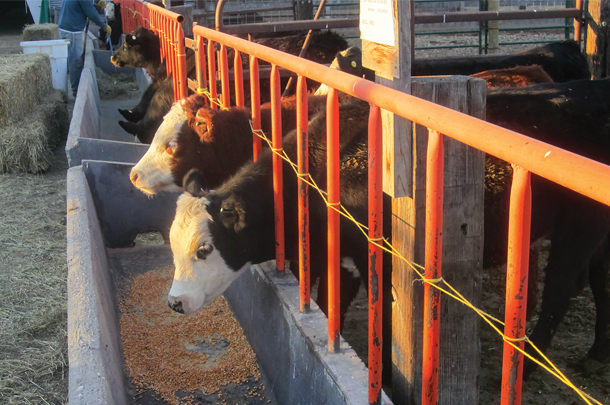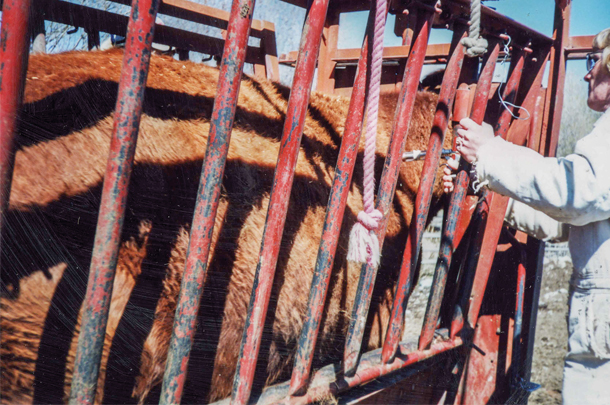And antibiotic residues in meat (which is a much smaller issue).
Antimicrobial resistance
David Smith, epidemiologist and beef program leader at Mississippi State University, says this is an important issue. “Some people are still skeptical, but it’s real. I have a friend who recently went to the hospital and picked up a resistant organism that put him into shock and the ICU."
"I have known people who died from picking up resistant infections in hospitals. Resistant microbes also create problems for our ability to treat animal infections. There is currently a lot of debate about how much to blame animal agriculture for resistance problems in people,” he says.
“The CDC (Center for Disease Control), FDA and USDA have been working together since 1996 to collect information about antimicrobial resistance in the National Antimicrobial Resistance Monitoring System."
"Salmonella is an important foodborne pathogen that could originate with livestock, for instance, and these bacteria are often resistant to antibiotics,” says Smith.
“The CDC, FDA and USDA have looked at salmonella isolates from people with salmonella infections, and the resistance patterns. They have looked at the same thing from meat in stores and from live animals. With a few exceptions, the salmonella recovered from people, in meat and in animals has not changed in resistance over the last 10 to 15 years."
"The proportion of salmonella isolates resistant to some of the most commonly used antibiotics in agriculture has even reduced over time. Still, we need to continue to pay attention,” he says.
“Producers need to work with their veterinarians to come up with appropriate plans for using antibiotics. There are new Veterinary Feed Directive (VFD) regulations coming up. By December 2016, producers who plan to put antibiotic in feed or water will have to do it with a veterinarian’s order. This is another reason for working closely with a veterinarian who will feel comfortable with writing that order,” says Smith.
“The reason this new directive has come about is because 94 percent of the medically important antibiotics used in agriculture are delivered in feed or water, according to the FDA,” he says. Treating a sick animal on the farm is just a small part of the picture regarding antibiotic use. The volume of drugs given to animals via injections is relatively small – about 4 percent.
“Antibiotics delivered in feed and water is huge in comparison, but that’s across all species – swine, poultry, fish, etc., and not just cattle. The largest total volume of medically important drugs are put into feed and water. That’s why this was an easy target for the FDA to say we need more oversight on use of these drugs,” he says.
“At the same time, there will no longer be any antibiotics used solely for growth promotion purposes. You can use drugs for disease treatment and prevention – but not for growth,” Smith says.
Chris Chase, department of veterinary and biomedical sciences, South Dakota State University, was involved with the Farm Foundation workshop at Rapid City, South Dakota, and thinks most producers understand stewardship and responsible use of antibiotics.
“Though science doesn’t support the idea that antibiotic use in animals is leading to more resistant pathogens (impacting antibiotic effectiveness in humans), the bottom line is what the consumer wants. The market drives what we do, whether we like it or not,” he says.

“There is a lot of confusion about the new VFD. In the past, if an animal had a snotty nose, a producer might put some Aureomycin crumbles in the feed. Today, you won’t be able to do that unless your veterinarian comes out and looks at the animal, and if the animal is sick, the vet might say antibiotics are needed at a treatment level and not at a low level in feed,” says Chase.
This makes sense. The higher dose is more likely to knock out the pathogens.
“I’ve been involved in the swine industry, and they have been dealing with a VFD for five years. Part of the problem in swine was residue (which was never really a problem in cattle), and the residue was sulfa. The problem in pigs was that when you feed sulfa, it is excreted in urine, and pigs could recycle it – literally – cleaning up edible material in the pen. This issue with sulfa was what drove the VFD for swine,” he says.
“It makes more sense to treat therapeutically than with low levels in feed, partly because we are beginning to understand how important the resident bacteria are in the GI tract – the ones we call the microbiome. We learned this when people got infections with Clostridia difficile."
"Generally, the only reason we see this disease is because they’ve had a massive antibiotic treatment, and their microflora didn’t bounce back the way it should.” Resident bacteria in the gut are the best protection against pathogenic bacteria in the GI tract because they don’t give pathogens a chance to move in and become established.
“In our food animals, low-level antibiotics in feed can mess up the microbiome. One of the things we’ve discovered in recent years is how important the intestinal tract is as an immune organ."
"A healthy gut is very important in terms of keeping a calf healthy. If the cells in the intestinal lining do what they are supposed to do, the chances of getting salmonella, for instance, are very low. Healthy cells keep tight junctions and the pathogens can’t get through,” says Chase.
“No one disputes the fact that feeding less antibiotics would be a good thing; it’s just come pretty fast and we need to understand how to use the veterinary prescription for the VFD."
"The fiercely independent cow-calf producer resists government interference in his business, but for the long-term health of the animal, the VFD will be a good thing. The swine industry made it work,” he says.
“If you look at this compared with how they are doing it in Europe, this is a much more common-sense approach. In Denmark right now, MRSA is a big issue, and they are blaming it on swine. We look at the MRSA rate in the U.S. in swine, and it is basically zero. Our swine industry has been managing antibiotics for quite a while."
"The problem in the beef industry is that we are accustomed to a certain set of management practices and now we have to make some changes,” he says.
The cow-calf producer will be affected least because he is not feeding low-level antibiotics like the feedlots. The cow-calf producer is mainly concerned about being able to continue using injectable antibiotics needed to treat disease. If producers are working with a veterinarian, they will still be able to do this.
“The problem is that there are still a fair number of producers who don’t have that veterinarian-client-patient relationship, and now they’ll need to have one. Some people have never worked with a veterinarian. For instance, here in South Dakota, looking at the situation with food-animal veterinarians, we have many areas that are underserved."
"We are trying to figure out how to meet the need – for people to have a valid veterinary-client-patient relationship. This means someone has to take a look at those animals now and then and not just consult over the phone,” says Chase.
Residues
“This is a different issue. In most cases, orally fed antibiotics are not an issue in terms of tissue residues,” says Chase. “Injectable products are the important factor for residues, so we need to pay attention to withdrawal times and proper administration. This is crucial, to make sure there are no residues in meat, in case a person eating the meat has a penicillin allergy, for instance."

"The residue issue doesn’t have much to do with antibiotic resistance; we just don’t want to have any antibiotics carried over in the meat that people might be allergic to,” he says.
Smith has been talking to veterinarians about this topic, looking at antimicrobial resistance, residues and the concern about chemical and biological hazards in food. “This is a great success story (in contrast to the issue of antibiotic resistance). BQA (Beef Quality Assurance) programs have helped immensely."
"Veterinarians, extension and producer organizations have gotten together to help educate producers. Chemical residues found in feedlot cattle are now about one in a million head of cattle,” says Smith.
This has been a great educational effort that has had a meaningful impact on the quality and safety of beef. The consumer doesn’t have to worry about residues in meat, compared to what might have been a problem 30 years ago.
“There are good systems in place now to prevent this, at least in those industries that have systems for record-keeping and keeping track of animals, and following label instructions on withdrawal times before sending animals to slaughter,” he says.
Some consumers look at antibiotic resistance and antibiotic residues as one big issue, but they are very different. “The only thing they have in common is the word ‘antibiotic,’” says Chase. The residue problem has diminished greatly over the past 20 years with rancher attention to BQA guidelines and practices. ![]()
Heather Smith Thomas is a freelance writer based in Idaho.
PHOTO 1: Growth promotion through antibiotics administered in feed is no longer permissible through the Veterinary Feed Directive.
PHOTO 2: Cattle on feed need healthy microbiome, which can be offset by antibiotic in the feed.
PHOTO 3: Injectable antibiotic products are the issue with antibiotic residues. So withdrawal times are closely monitored to prevent the residues in meat. Photos by Heather Thomas.








